Camino del Norte I. - Just Get Moving - Basque Country

Planning is important. What's more important? Taking action. In the next couple of weeks, I will tell the story of my first thru-hike, a pilgrimage, or just a long walk I started in August 2021: Camino del Norte, the northern and ocean route of the famous Camino de Santiago. I have long admired people who hiked long trails. That summer, I finally took the step. I quit my job and naively set off to travel. That travel never stopped for the next three years. Those first 820 kilometers on foot, through the beauty of España Verde, were some of the most enjoyable weeks of this entire period. I started in Irun, a town on the Spanish-French border in Basque Country, one of the most mystical and beautiful parts of Europe.
What Is a Camino?
The Camino del Norte, or Northern Way, is one of the routes of the Camino de Santiago. Unlike the more popular Camino Francés, the Camino del Norte follows the northern coast of Spain, offering views of the Cantabrian Sea and lush landscapes of Green Spain (España Verde). In general, it's quite the opposite of what many people would expect Spain to look like. That, to me, is its charm.
The Camino de Santiago is a network of pilgrimages leading to the shrine of the apostle Saint James the Great in the cathedral of Santiago de Compostela in Galicia. Some routes start in different Spanish cities, some in France, some in Portugal, and some even further away. The Camino del Norte was traditionally less travelled due to its challenging terrain, but it has gained popularity for its stunning scenery in recent years.
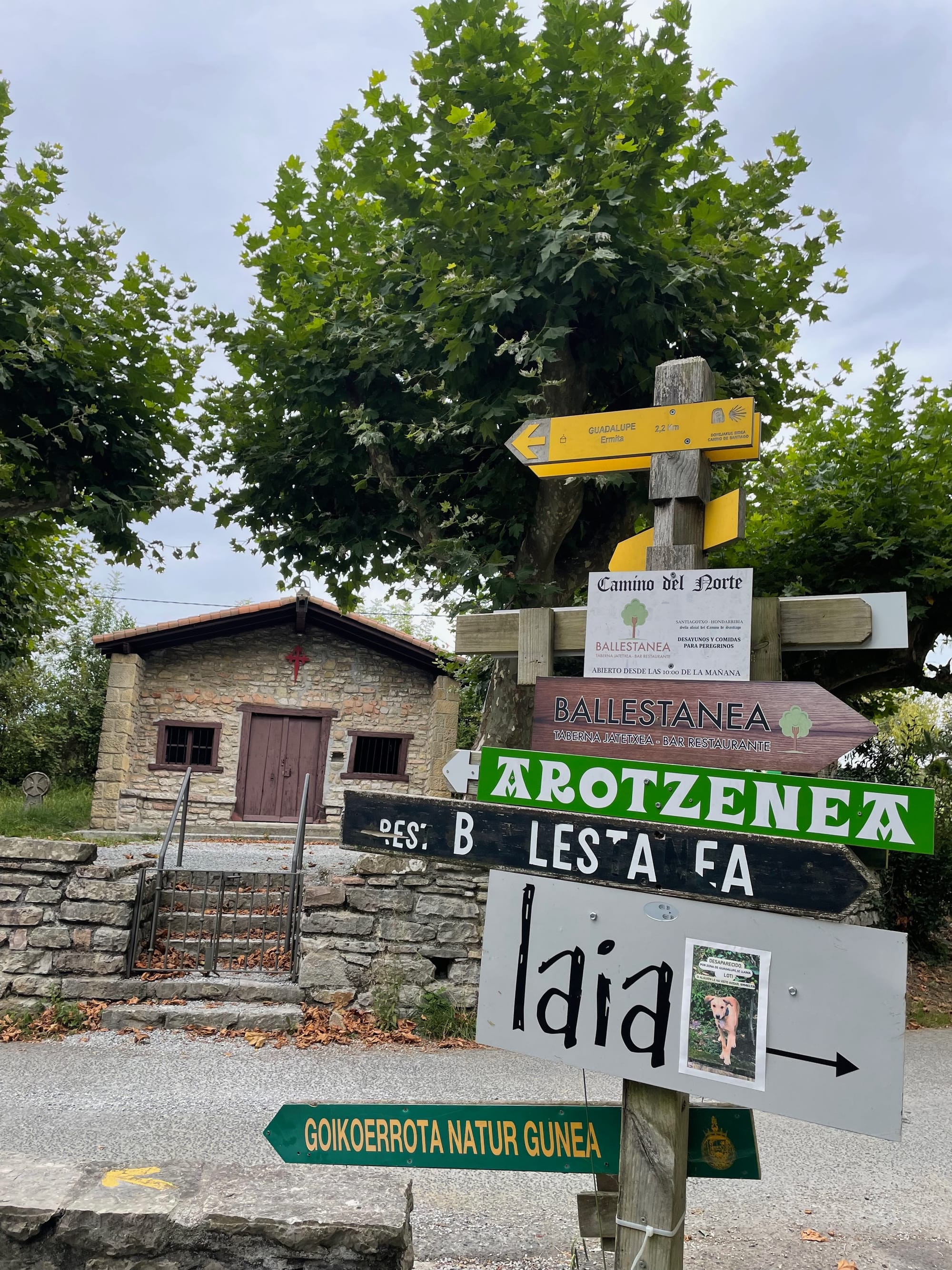
You can find people of different nationalities, religions, and motivations on the trail. That was the beauty of it. Despite it being a pilgrimage, not everyone does it for religious reasons. Parts of the Camino del Norte are recognized as UNESCO World Heritage sites, highlighting its cultural importance.
The overall infrastructure is very well-built, with plenty of hostels for pilgrims and hikers. You even carry a "credential" or pilgrim passport, collecting stamps from albergues (hostels), churches, and cafes along the way. This document is essential for receiving the Compostela certificate in Santiago and proving you have completed the whole journey. I chose the Norte route for its mix of coastal paths, forest trails, and urban streets, offering a diverse walking experience. I mean, what is a better way of setting your future goals than walking all day every day with a view of the never-ending Atlantic Ocean while feasting on Spanish cuisine? Reply to this email if you think of anything better, and I will gladly give it a try.
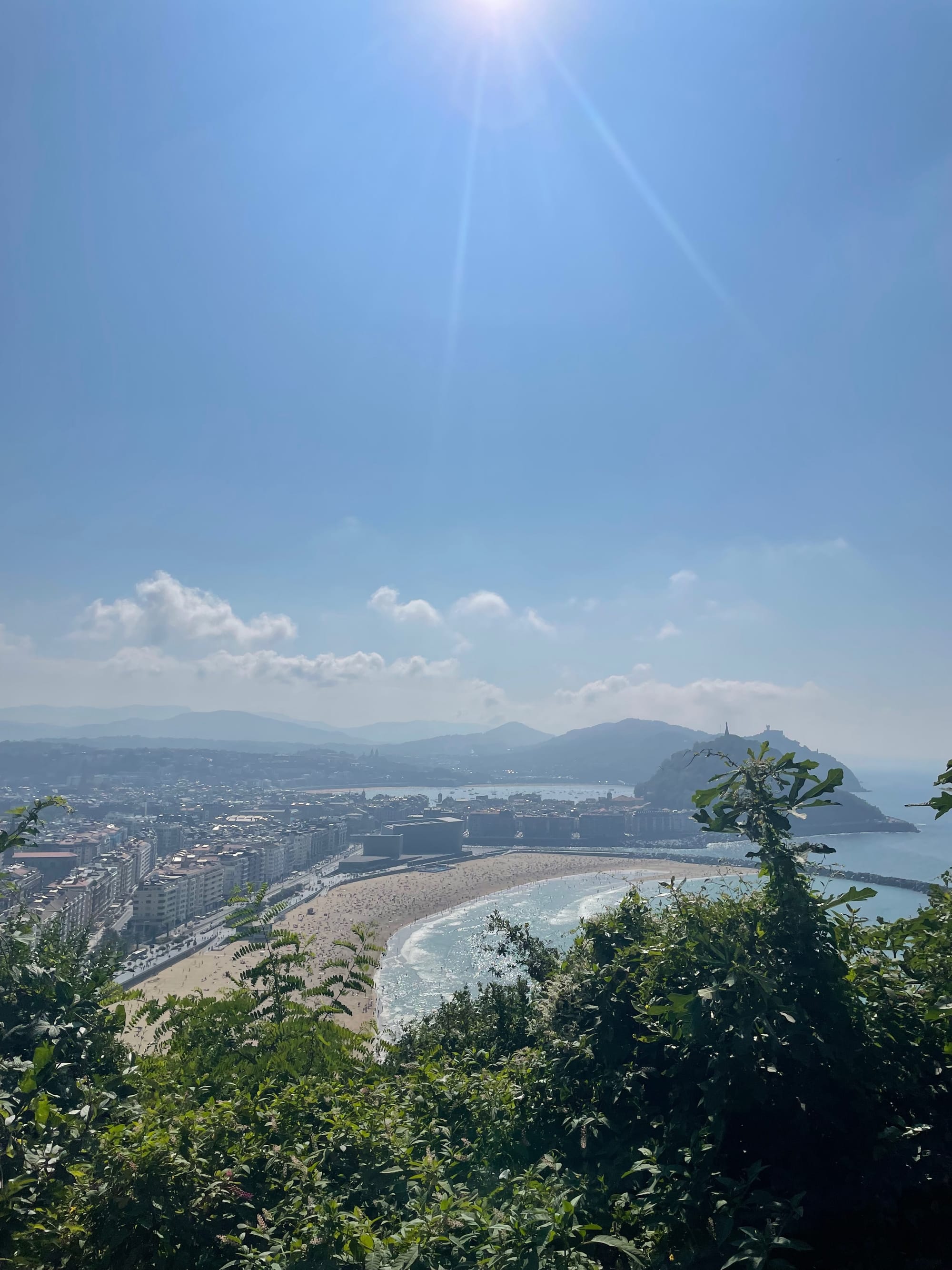
Mystical Basque Country
I hopped on a train to Bratislava, then took a bus to Vienna airport. Then I flew to Santander, took a bus to Bilbao, and another to San Sebastian. I was going to spend a night in Donostia, as locals call it in Euskera, the Basque and oldest living language in Europe. The Basque Country is one of Spain's autonomous regions. It was granted the status of nationality within Spain, as attributed by the Spanish Constitution of 1978. However, the greater region extends into France.
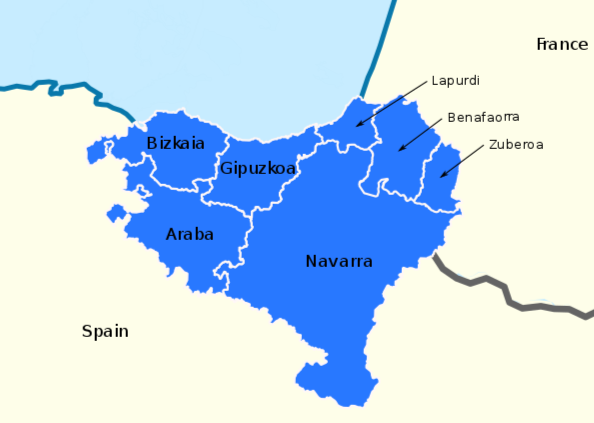
I dropped my bag in a hostel and greeted fellow travellers. It had been a while since I used my Spanish, so I had to brush it up quickly. As soon as I went to explore the city, I realized I did not have to, as the Basque language and signs were more prevalent than Spanish. I enjoyed pintxos (the Basque version of tapas) and txakoli (world-class local wine). As you can see, Basque includes plenty of Xs. It does not remind me of any other language, and if anyone tells you it does, they are lying. It's unique, and historians are still trying to figure out its origin. The Basque people are fiercely proud of their heritage. I saw it on my first day. Knowing I was about to start a big adventure and that the first day is one of the most demanding of the whole journey, I went to bed full of excitement.
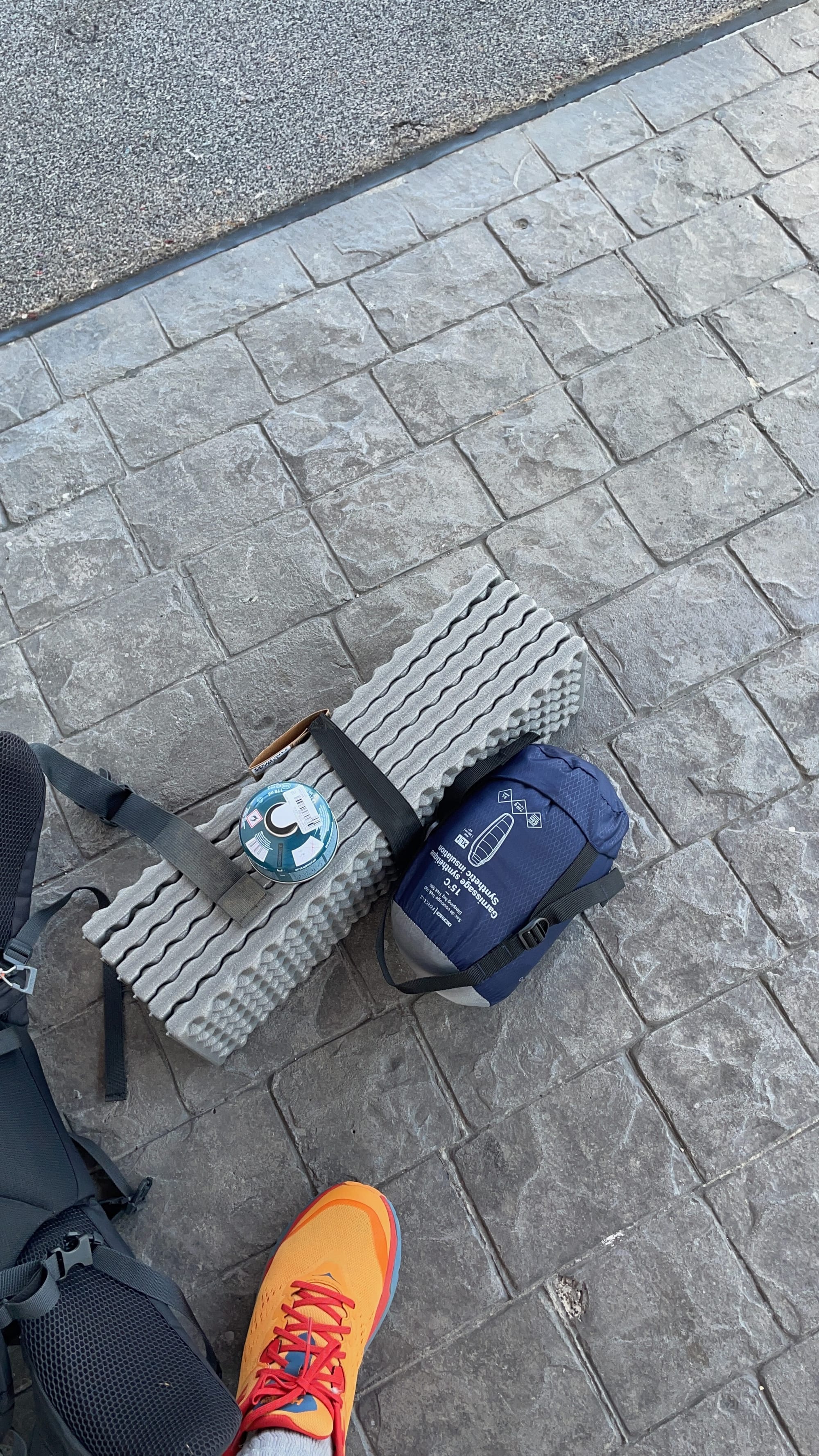
Bought the last essentials and kicked off the adventure.
The first day was pretty challenging, starting with a steep incline on the famous Jaizkibel mountain, which has been part of a few stages of the Vuelta a España. As I made my way through the bamboo forest and arrived at the top, I was greeted by a bunch of wild horses. Hard to imagine a better first day, to be honest. I arrived back in San Sebastian after a 25 km hike. I was stinky, sweaty, and felt so strange walking through the streets of this incredible town, seeing all the chic-dressed vacationers. Yet, I felt weirdly fulfilled. This feeling continued throughout the following days as I made my way along the breathtaking coastline, stopping in surf towns like Zarautz and remote villages deep in the mountains like Guernica.
I embarked on this trip to disconnect from the internet and social media to connect with people. The only app I kept on my phone was WhatsApp to let my family know how my journey was progressing. This proved to be one of the best decisions, with the only downside being that I exchanged very few contacts with the inspiring and interesting individuals I met. Normally, I aimed to walk all morning by myself, just with my thoughts and soaking up the beauty fully. In the afternoon, I would aim to find a fellow walker and listen to their stories. People of all ages and motivations make their way to the Camino. Some do it to cure broken hearts, others to celebrate life milestones. Everyone shares one thing: the desire to disconnect from day-to-day life, to feel free, and to find peace within themselves.
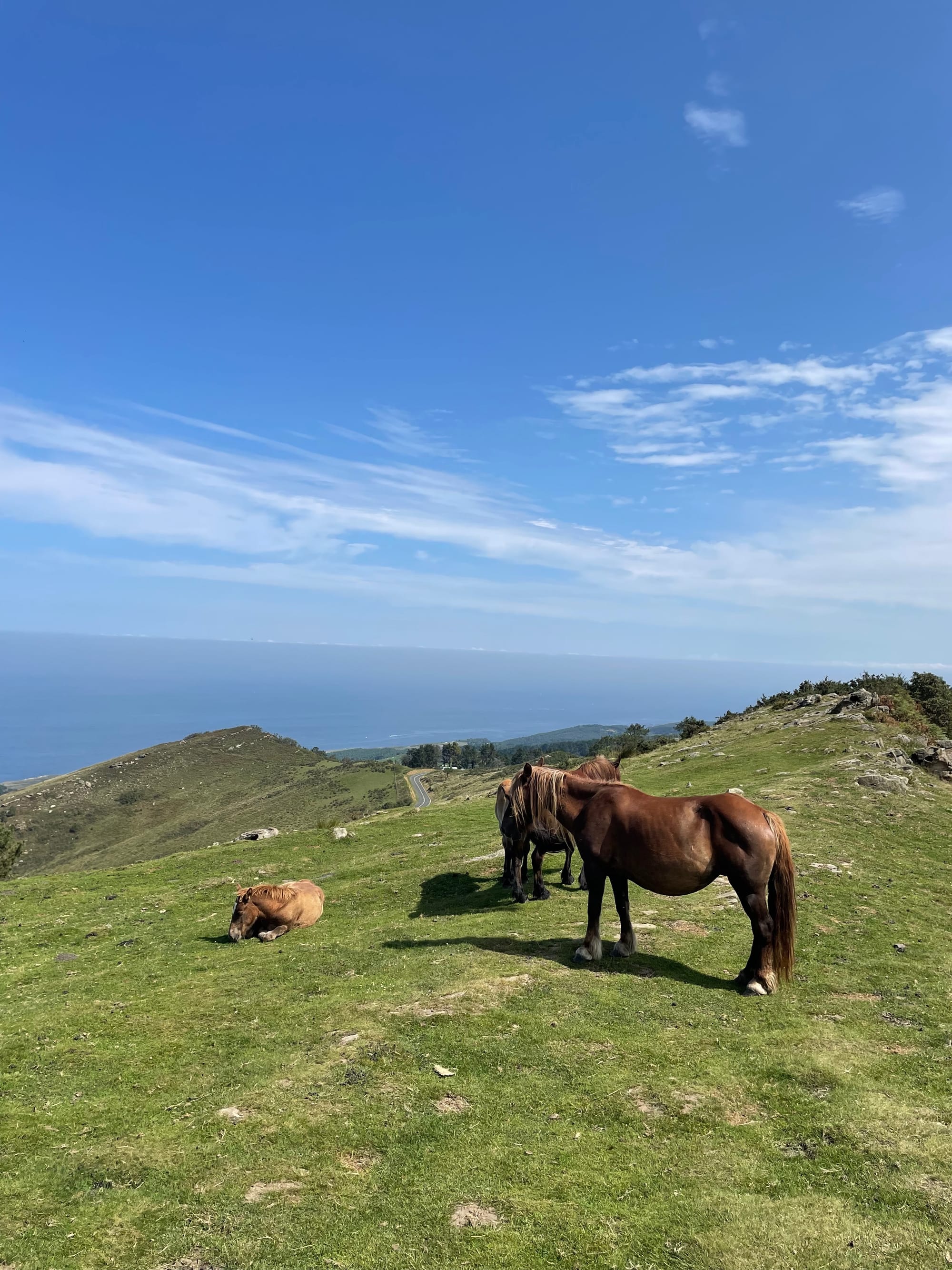
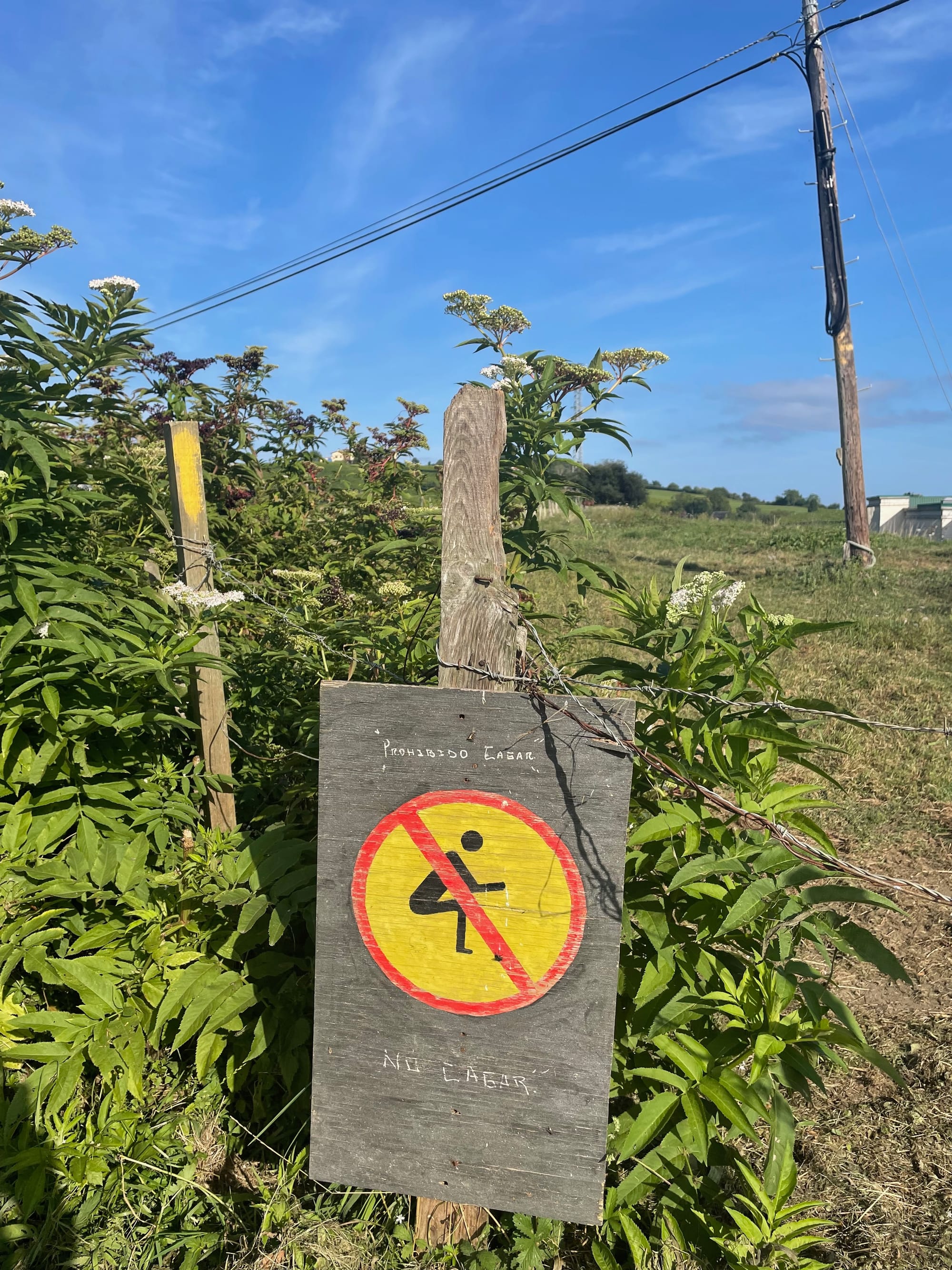
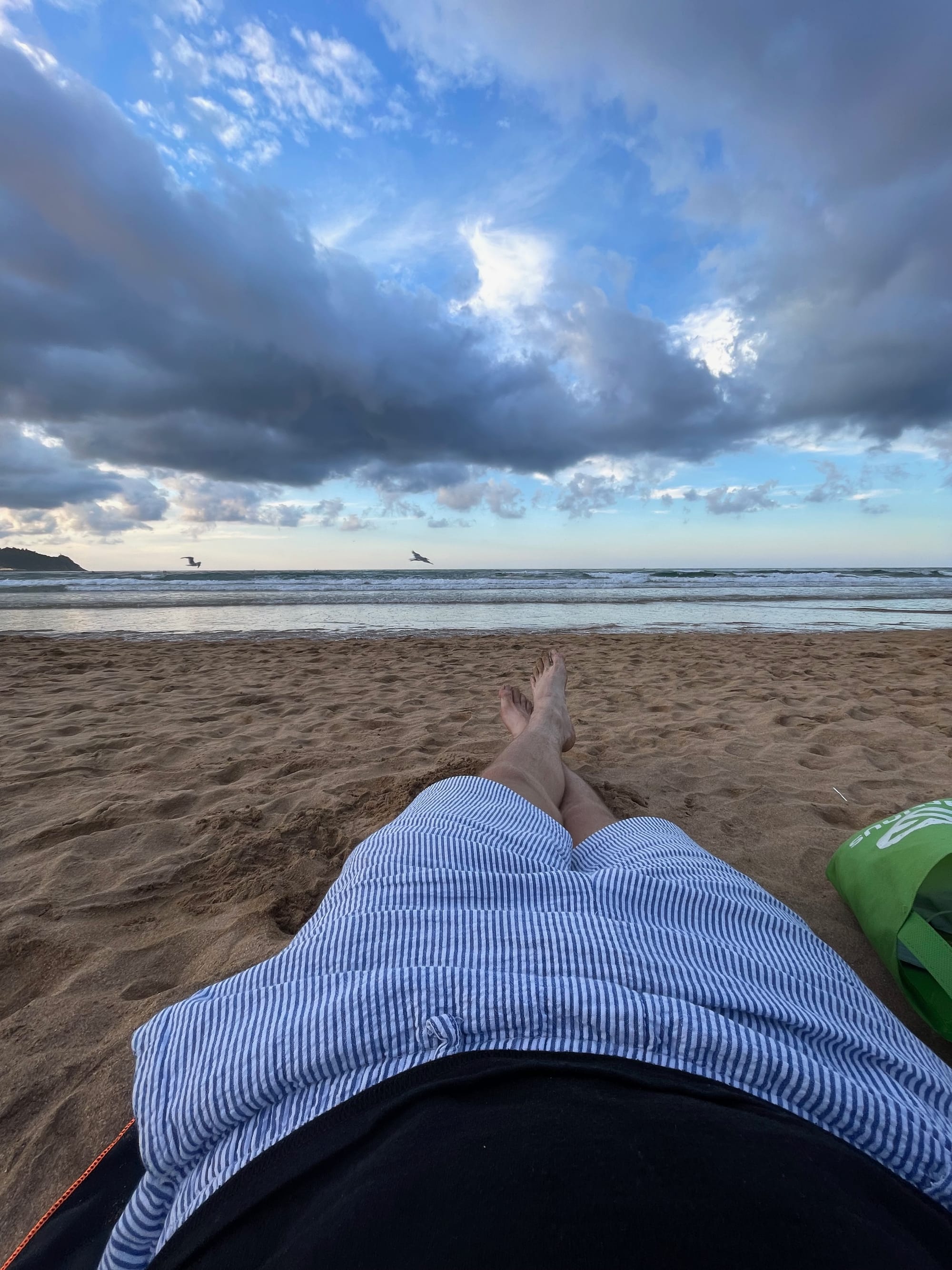
No pooping in the wilderness for reckless pilgrims.
My daily routine changed the moment I reached Bilbao, as my friend Lukas joined me for a week-long stint. I was excited, and we had initially planned to complete the entire Basque stage together. However, our plans were postponed because, during our 4 AM run for a flight to Spain, Lukas dropped his wallet somewhere in the streets of Bratislava and couldn't board the plane without his ID. So, he postponed his flight by a week. We reunited in Bilbao, the largest city in the Basque Country and home to the iconic Guggenheim Museum, designed by architect Frank Gehry. This modern art museum has revitalized the city and become a global cultural landmark.
We spent a night in Bilbao and continued our way the next day toward Pobeña. We decided to spend a night camping on the beach, channelling our inner Into the Wild spirits, cooking simple hiking food on stoves, and stargazing at the Milky Way. As we had no tent, just sleeping pads and bags, our hippie dream was interrupted by a 2 AM pitbull attack that scared the living soul out of us. Nonetheless, we went back to sleep and woke up early to catch the sunrise and get ready for another stage.
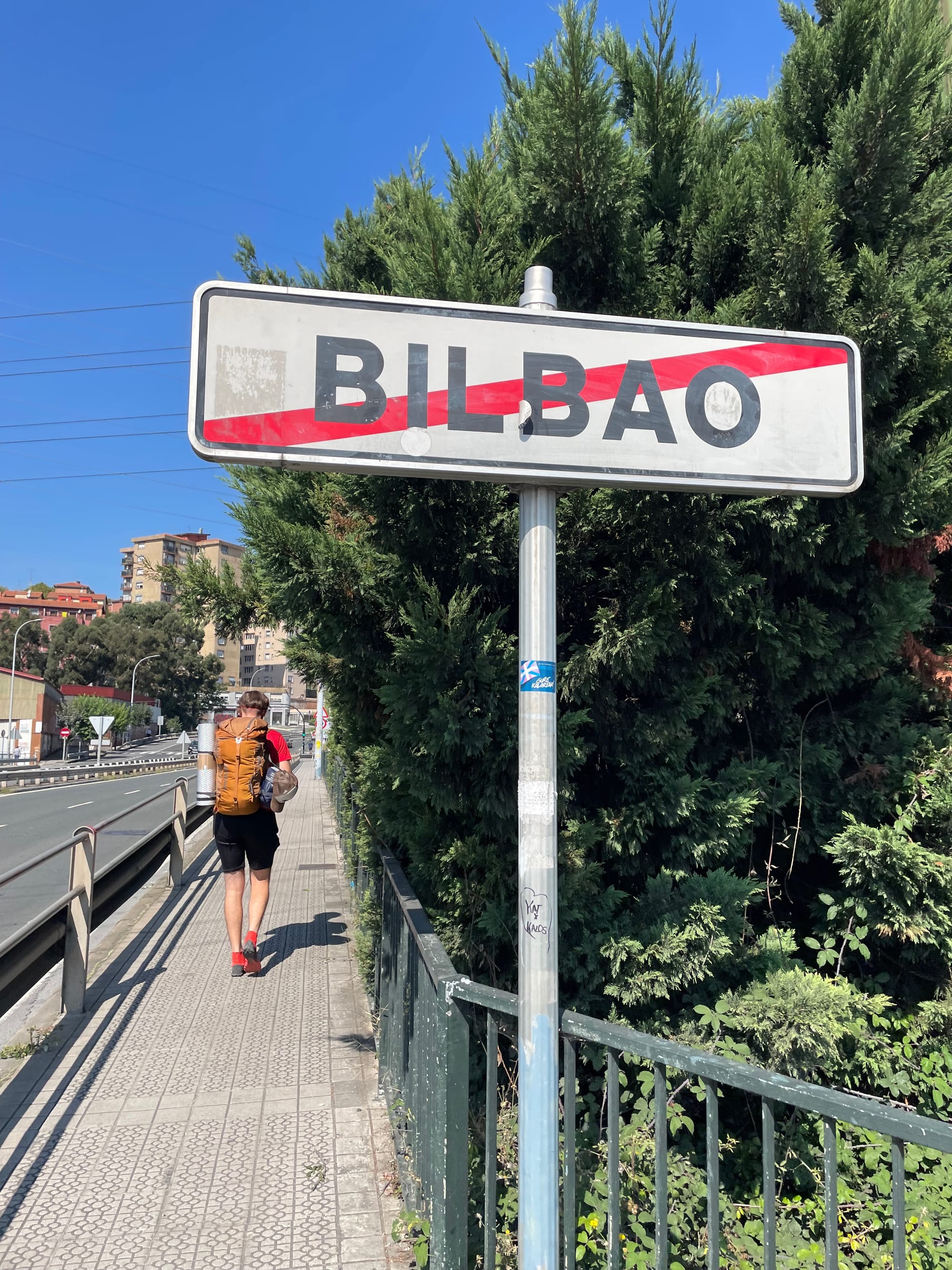
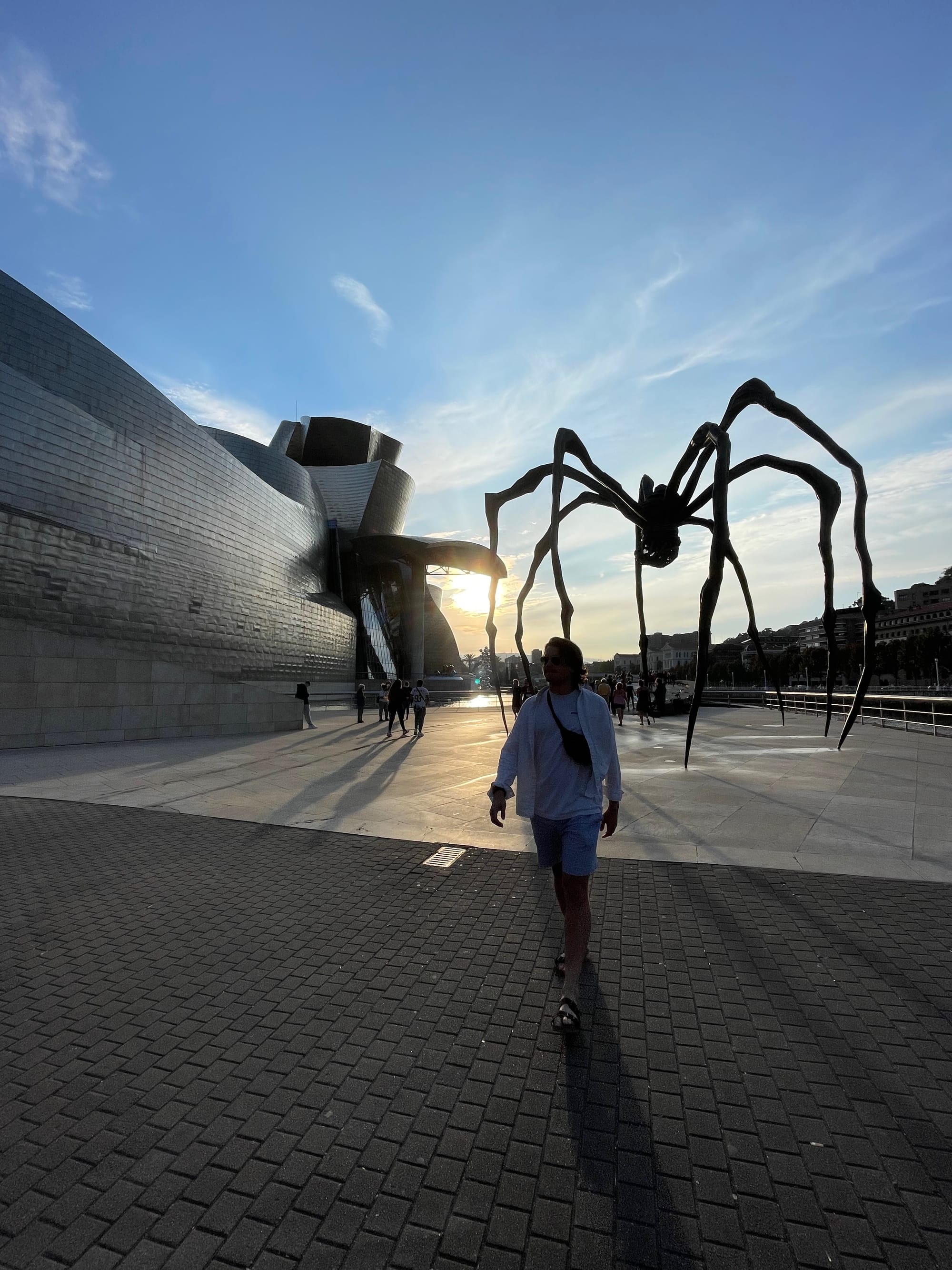
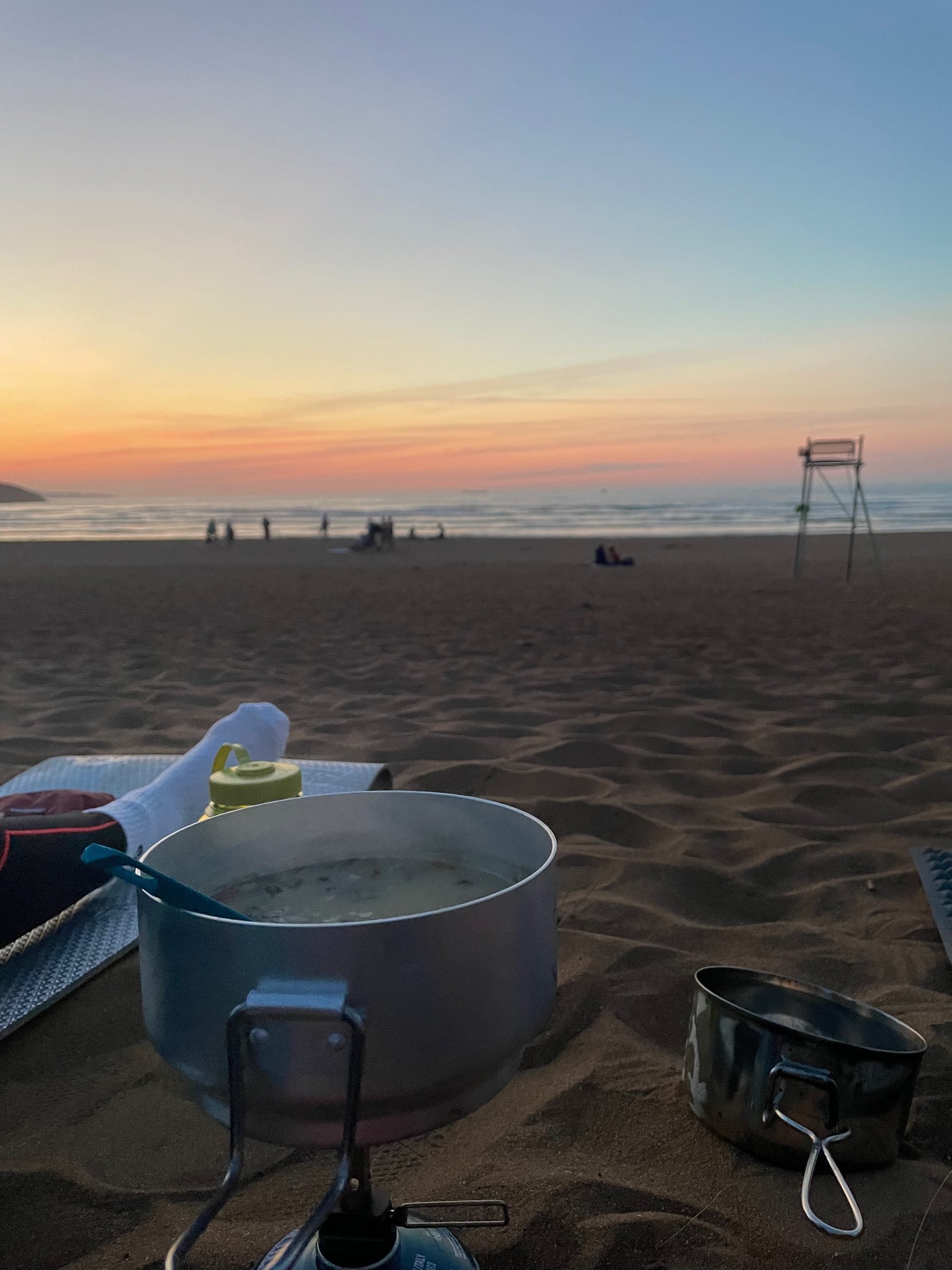
Guggenheim Museum & beach sleepover.
Digital Nomading in Basque Country Before It Becomes Cool
It was on the Basque coast that I fully realized how amazing the opportunity to work from places as beautiful as this, on global projects, can be. At the beginning of the Camino, I was in the later stages of interviewing with a world-leading retail company, one that I thought was my dream job. I did not land the job, but that was an eye-opener. I did not want to move to a big city and climb further up the corporate ladder, no matter what company it was. I wanted freedom. Freedom to work from wherever I wanted. The Camino gave me that realization.
The Basque Country itself is emerging as a notable destination for remote work and digital nomads, thanks to everything I described above. Approximately 32% of jobs in the region are amenable to remote work, positioning it as one of the top Spanish regions for remote work opportunities.
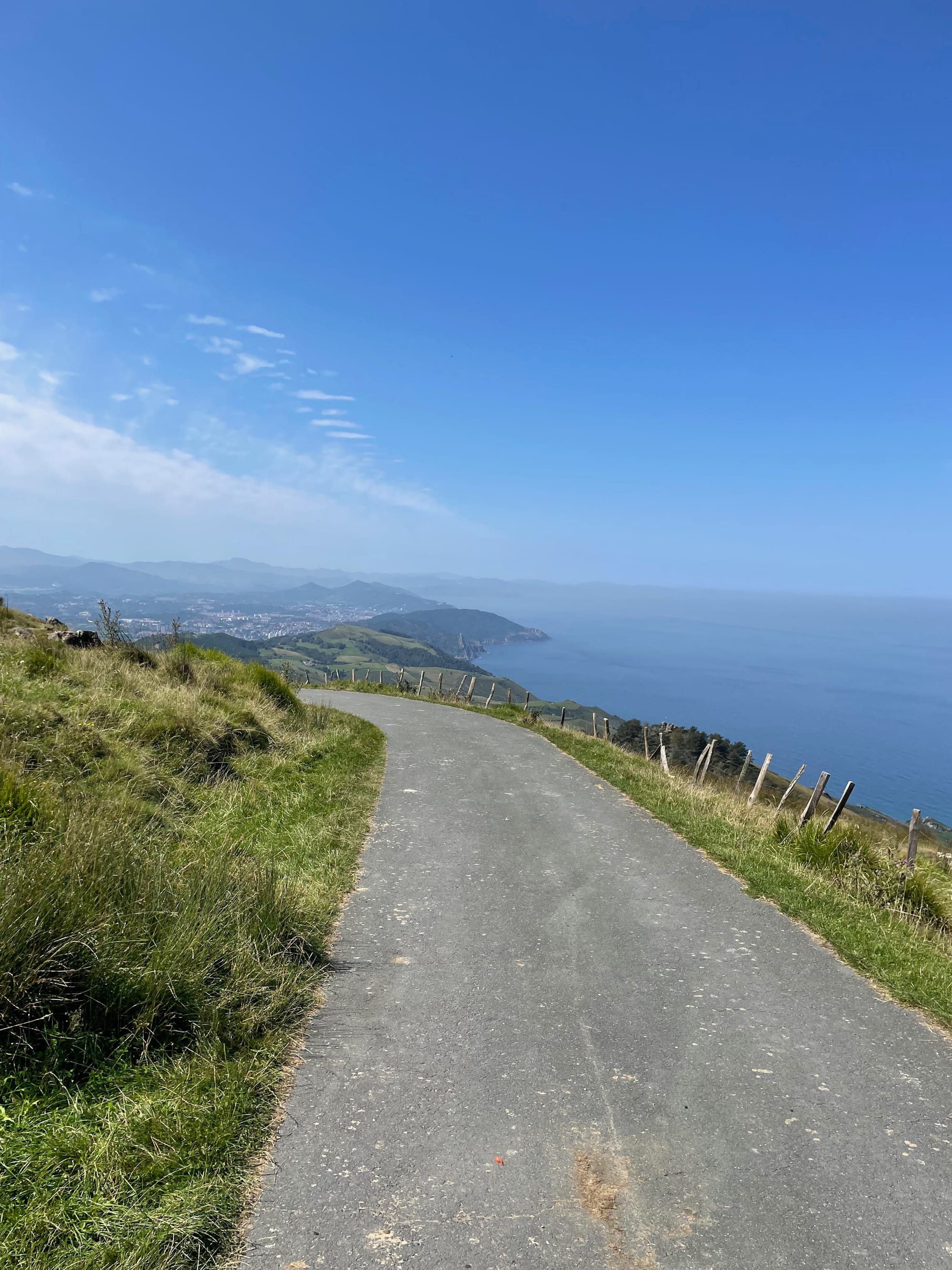
This is complemented by a variety of coworking spaces across cities like Bilbao, San Sebastián, and Vitoria-Gasteiz, which offer flexible work environments tailored for professionals. Notable coworking spaces include BilbaoLab, Ehub!, and ICAZA, each providing unique amenities and community atmospheres. In addition to coworking options, the Basque Country is slowly becoming a spot where future coliving spaces may open. For instance, the famous Sun and Co. pop-up coliving experience combines living and working in a historical villa within the Urdaibai Biosphere Reserve, fostering community and collaboration among participants. Moreover, initiatives aimed at attracting digital nomads are gaining traction, such as dedicated programs by Bizkaia Talent, which highlight the region's appeal for remote professionals seeking a blend of work and leisure in a culturally rich environment.
To give a better perspective of nomads in Spain, currently, there are approximately 34,000 digital nomads residing in Spain, with many having obtained the new Digital Nomad Visa since its launch in January 2023. This visa allows remote workers to live and work in Spain for up to five years, provided they meet specific income requirements, making it an attractive option for many seeking a change of scenery. This region is particularly appealing to surfers and outdoor enthusiasts, boasting renowned surfing spots like Mundaka and Zarautz, which attract both beginners and seasoned surfers alike. Apart from surfing, did you know that the famous Dragonstone island from Game of Thrones was shot here, in San Juan de Gaztelugatxe?
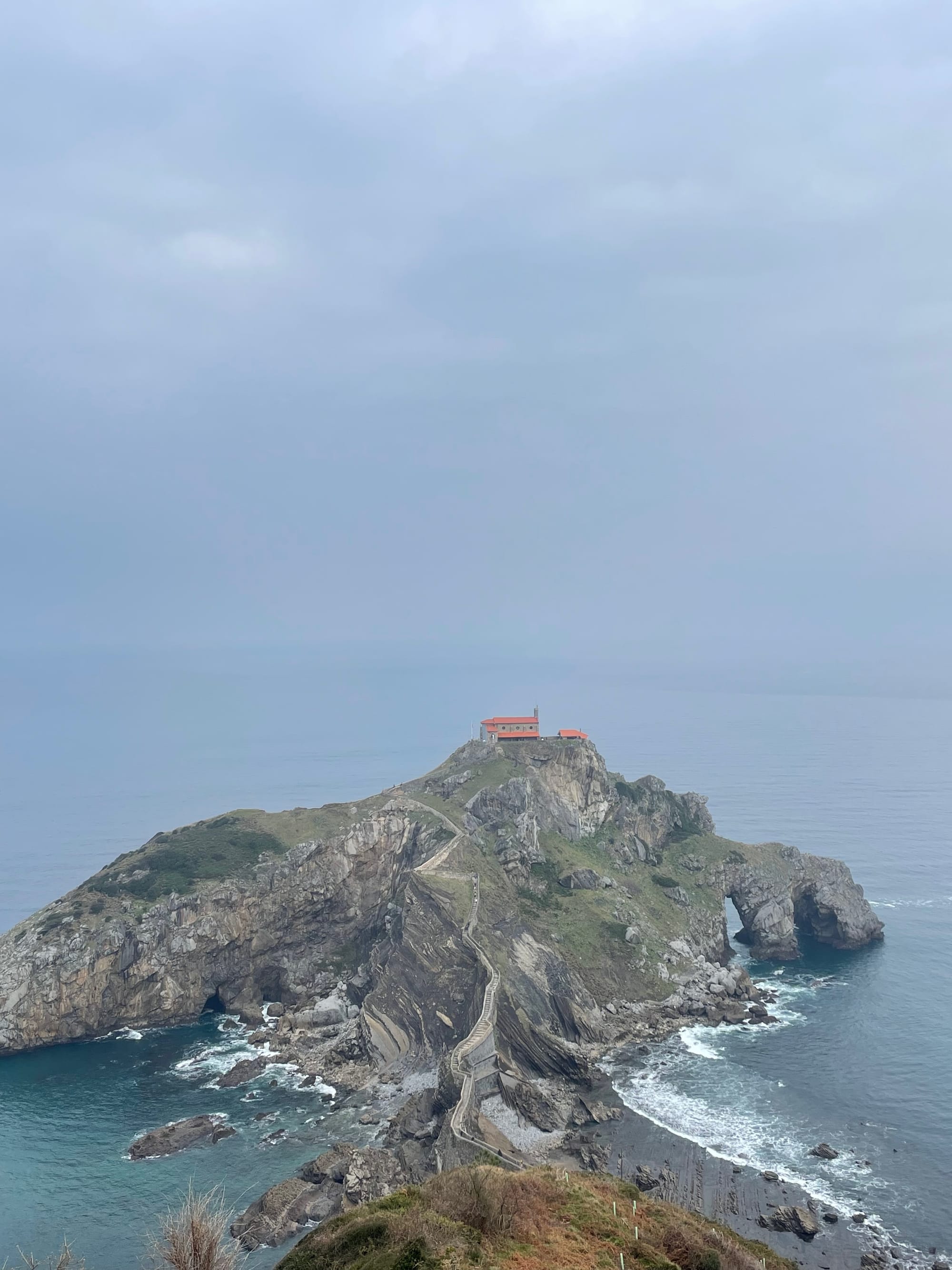
Slowly but surely, Basque Country is positioning itself as a premier destination for remote workers and digital nomads looking for a balanced outdoor/productive lifestyle.
Next week we dive into another autonomous region - Cantabria.
Until then, keep exploring.
